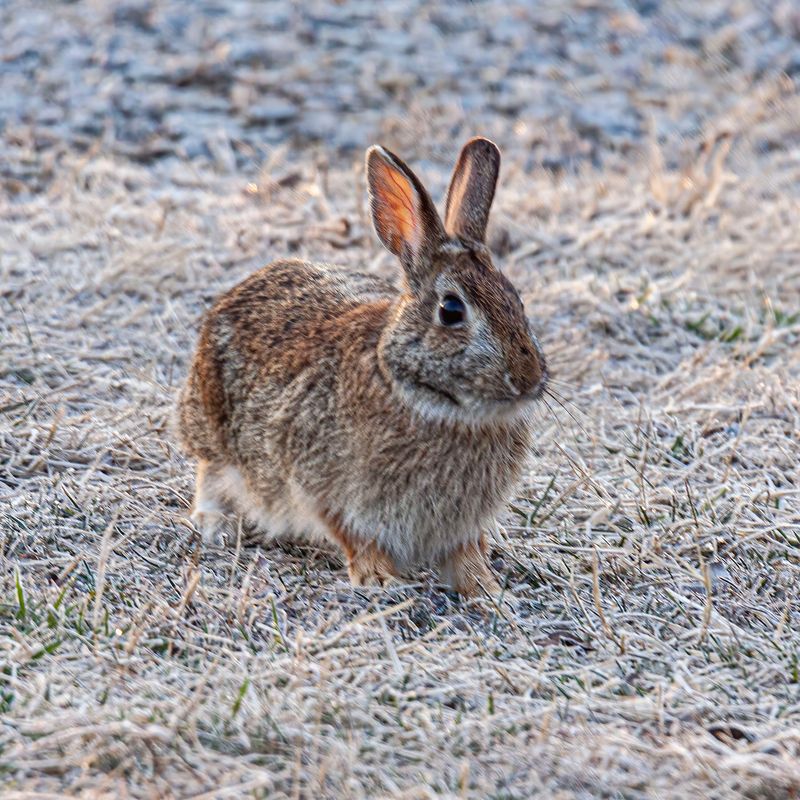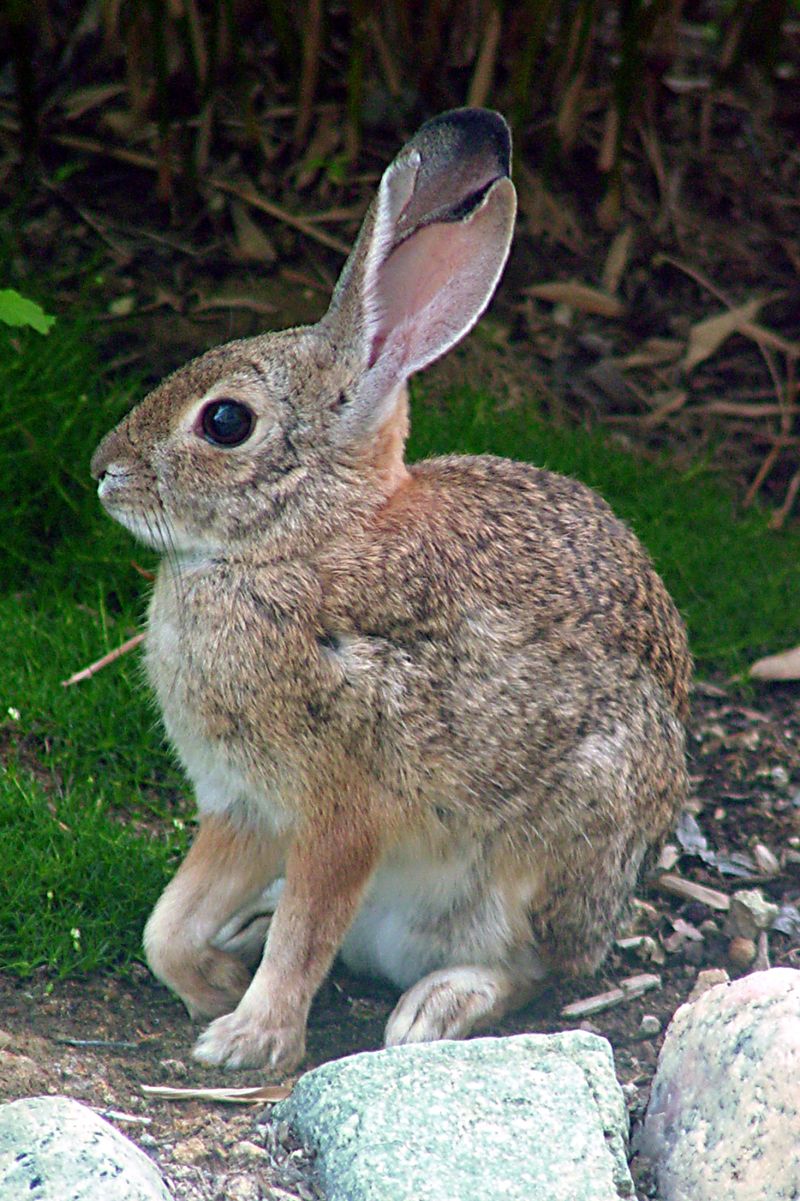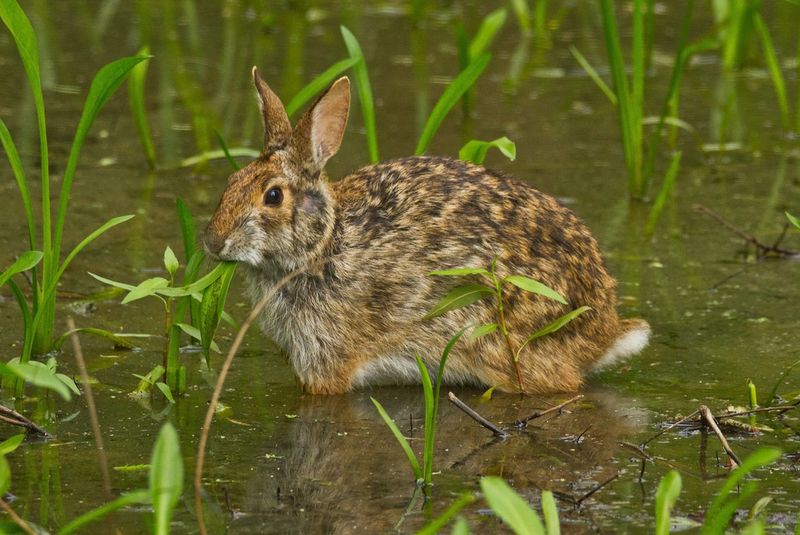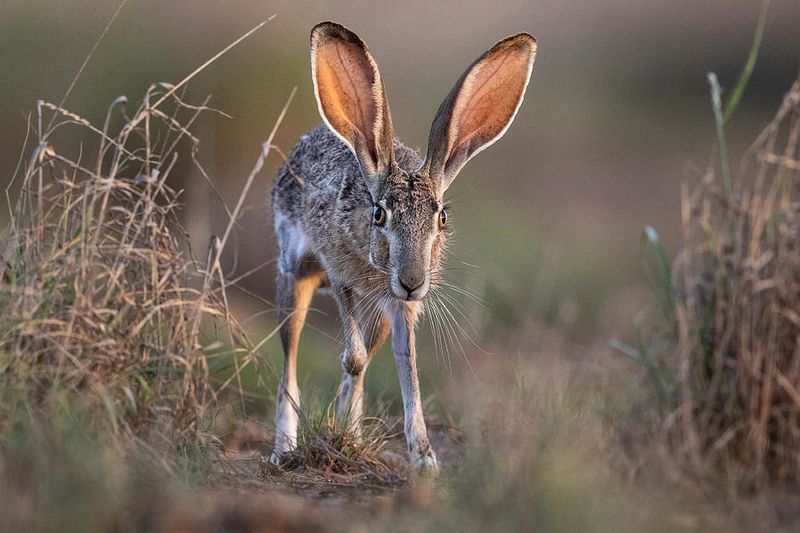Texas is a rabbit wonderland, with a surprising variety of species hopping across its diverse landscapes. From the piney woods to the desert scrub, the state provides ideal habitats for these charming creatures.
Whether you’re a wildlife photographer, nature lover, or simply curious about the furry visitors in your backyard, knowing which rabbit species call Texas home can turn an ordinary sighting into an exciting discovery.
1. Eastern Cottontail: The Backyard Bunny Everyone Recognizes

These little brown speedsters have earned celebrity status in Texas! You’ll often catch Eastern Cottontails darting around yards, their fluffy white tails bouncing along as they hop through the grass.
They’re the most common rabbit in the state, thriving in brushy fencerows, woodland edges, and yes, your meticulously landscaped garden. Eastern Cottontails have grayish-brown fur with rusty patches on their necks and shoulders.
Weighing just 2-3 pounds, these adaptable critters munch on grasses in summer and switch to bark and twigs during winter months. Fun fact: Baby cottontails open their eyes just a week after birth and are completely independent after only three weeks. Talk about growing up fast!
2. Desert Cottontail: The Drought-Defying Desert Dweller

Desert Cottontails are survival champions. They somehow thrive where other creatures wither, making homes in the harshest, driest parts of the state. Their slightly larger ears and paler coat distinguish them from their eastern cousins—adaptations that help beat the scorching heat. Last summer while camping near Big Bend, I spotted one calmly munching spiky pear cactus pads like they weren’t covered in spines. These remarkable rabbits extract most of their water from their food and rarely need to drink from water sources. Since they’re excellent at regulating temperature, they spend hot days lounging in scraped-out depressions beneath desert shrubs, emerging at dawn and dusk when the heat drops to more manageable levels.
3. Swamp Rabbit: The Swimming Bunny of East Texas Wetlands

Who knew rabbits could swim? Swamp Rabbits defy all the usual bunny expectations—they’re the splash-loving daredevils of East Texas wetlands.
Larger and darker than cottontails, these chocolate-brown rabbits have coarse fur that repels water during their frequent swims across bayous and marshes. They’ve earned the nickname “cane-cutters” from their habit of munching on cane thickets.
Unlike their drier-habitat relatives, these wetland specialists leave distinctive large, square-shaped droppings on logs—their version of territorial marking posts. I nearly fell out of my canoe when I saw one deliberately swim across a creek rather than hopping around it! Their powerful hind legs make them surprisingly efficient paddlers as they navigate the soggy wilderness of East Texas.
4. Black-tailed Jackrabbit: The Long-eared Speed Demon

Jackrabbits aren’t actually rabbits—they’re hares! The distinction hit me when I watched a Black-tailed Jackrabbit rocket across a West Texas ranch at nearly 40 mph, its massive black-tipped ears working like air conditioners in the summer heat. Those extraordinary ears aren’t just for show—they’re packed with blood vessels that release excess body heat, keeping these speedsters cool in scorching temperatures. Their lanky build and powerful hind legs make them built for distance running rather than the quick-burst escapes of true cottontails. Born fully furred with eyes wide open, jackrabbit babies (leverets) can hop within hours of birth. Unlike burrowing cottontails, these independent creatures rest in shallow depressions called “forms” scratched into the soil.
